The early June disaster at the alpine lake Sahastra Tal, which saw nine trekkers perish after being caught in a blizzard, has sent shockwaves through the Indian outdoor tourism industry.
Veteran trekking guide Vaibhav “VK” Kala, the vice president of the Adventure Tours Operators Association of India (ATOAI), is one of India’s leading adventure tourism experts. As the founder and director of Aquaterra India, Kala has run adventure expeditions in India for more than three decades, and guided everywhere from rivers like Africa’s Zambezi and China’s Yangtze to Chile, Morocco, the United States, and across the Himalaya.
Kala penned the following essay for The Outdoor Journal, in which he calls for a closer look at the history of India’s outdoor tourism and guiding industry, advocating for greater oversight to prevent disasters like Sahastra Tal in the future.
– Owen Clarke, editor-at-large
The events at Sahastra Tal are a stark reminder of India’s need for controlled adventure travel management. These deaths could have been prevented with good trip planning, risk management, and preparation.
Until we as an industry acknowledge this and make changes, there will be more deaths. The entire ecosystem, including the media, needs to understand terminology and report incidents more responsibly, to address the big gap between the armchair adventurer and the reality on the ground.
Adventure Tourism in the Old Days
It’s important to understand this incident in the context of the history of adventure tourism in India. This industry has always been the domain of inbound tourism groups, almost completely overwhelming the cottage industry. The clientele were expats, diplomats, embassies and well-heeled Indians, for whom camping and rafting was a unique experience in India, by and on its holiest river; great conversations for the next cocktail dinner.
In 1992, a 4:00 a.m. start from the New Delhi office to a camp on the banks of the Ganga, 17 km upstream of beautiful Rishikesh, was always exciting. The roads were one lane on each side for the most part, and it would most of the day to reach the river, stopping for fresh vegetables at Khatauli, the fortress of northern India farmland owners. We were remote. To check if any changes were to be made for the weekend warriors descending at camp, one would have to do a 112 km round trip to Dehradun.
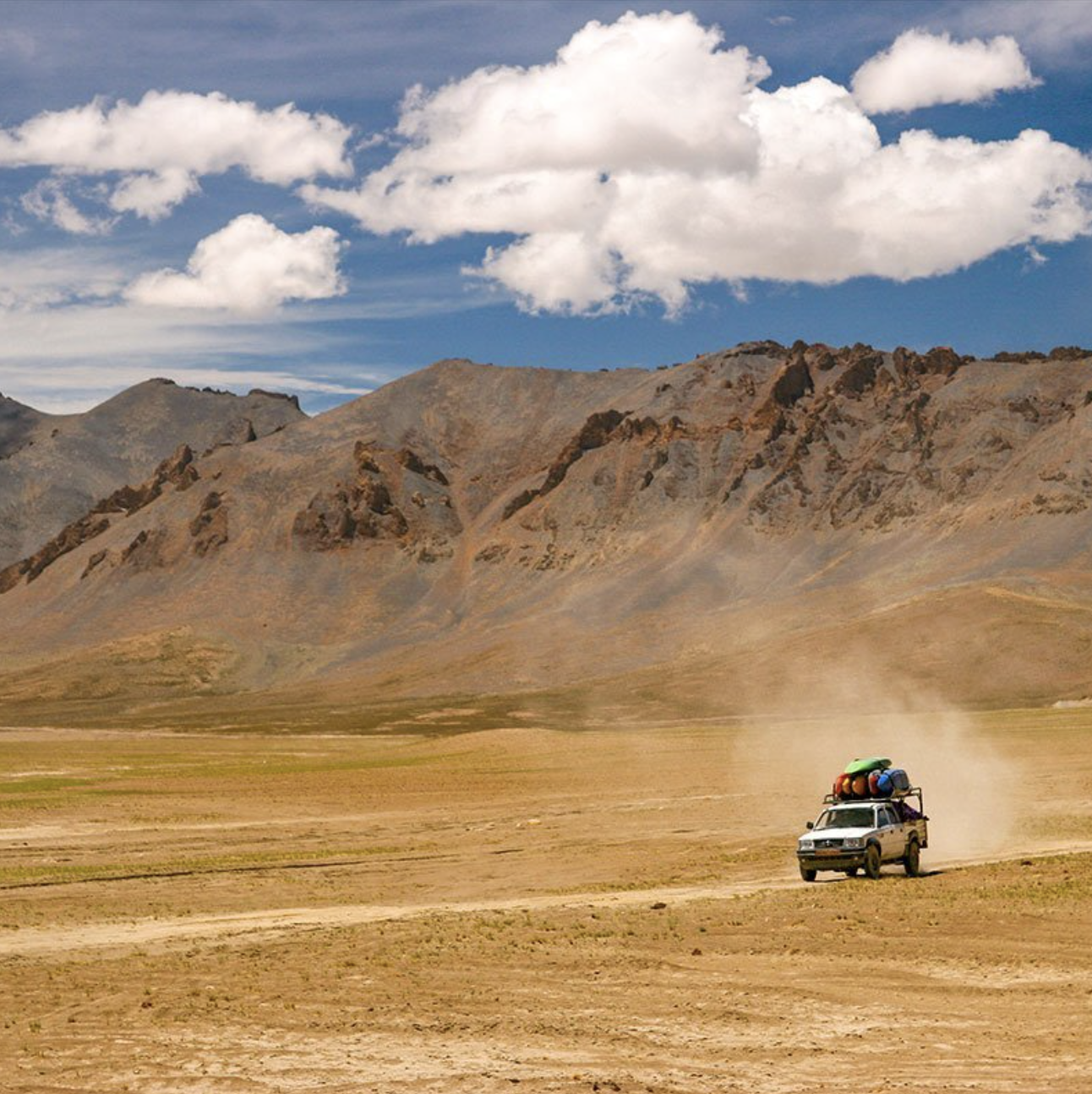
Mountaineering was confined to arrangements to base camp for groups of foreigners, there were not many Indians on our trails or passing through remote villages. This was the time when we would resort to arduous planning, without access to digital maps, smartphones, or the internet. It was done on the basis of hardcore domain expertise.
The trekking trails were untouched. The road networks that today snake through Himalayan hillsides to its most remote villages were beyond the realm of imagination. One of India’s largest projects–the Tehri Dam—had just begun, heralding a race to produce more energy for the country’s power-hungry plains.
It was hard to reach many places. In 1994 when I landed in Tuting as a 22-year-old guide, dressed in fatigues at the back of a fixed wing AN-32 transport plane, to guide the Indian army down the massive Siang, I remember I walked over the Wari La into Nubra, which is now a highway. I went over the Parang La when it just opened to foreigners in 1994, to see wild Kiang on the meadows of Chumik Shilde. I trekked to Hanle before it became a haven for home stays and a high observatory. It was the golden era. Stok Kangri (6,153m) didn’t have a fixed base camp tent serving maggi and beer.
Life was as it was meant to be. Those were heady days. The industry could paint the empty canvas as it wanted.
Yousuf Zaheer, who founded Himalayan River Runners in 1988, always said “Don’t kill the goose that lays the golden egg.” To make a business out of the spirit of adventure and exploration is challenging. Yousuf spent all his time trying to balance the two. It was this very thought—not wanting to kill the goose—that led him and wife Ganeve Rajkotia to put their business to rest, even after carefully nurturing it over the course of 30 years.
But unfortunately, the goose that laid the golden egg had already been slaughtered by the burgeoning “outdoor adventure” companies, aggregators and online merchants. We were already cooking our goose, even if we didn’t know it.
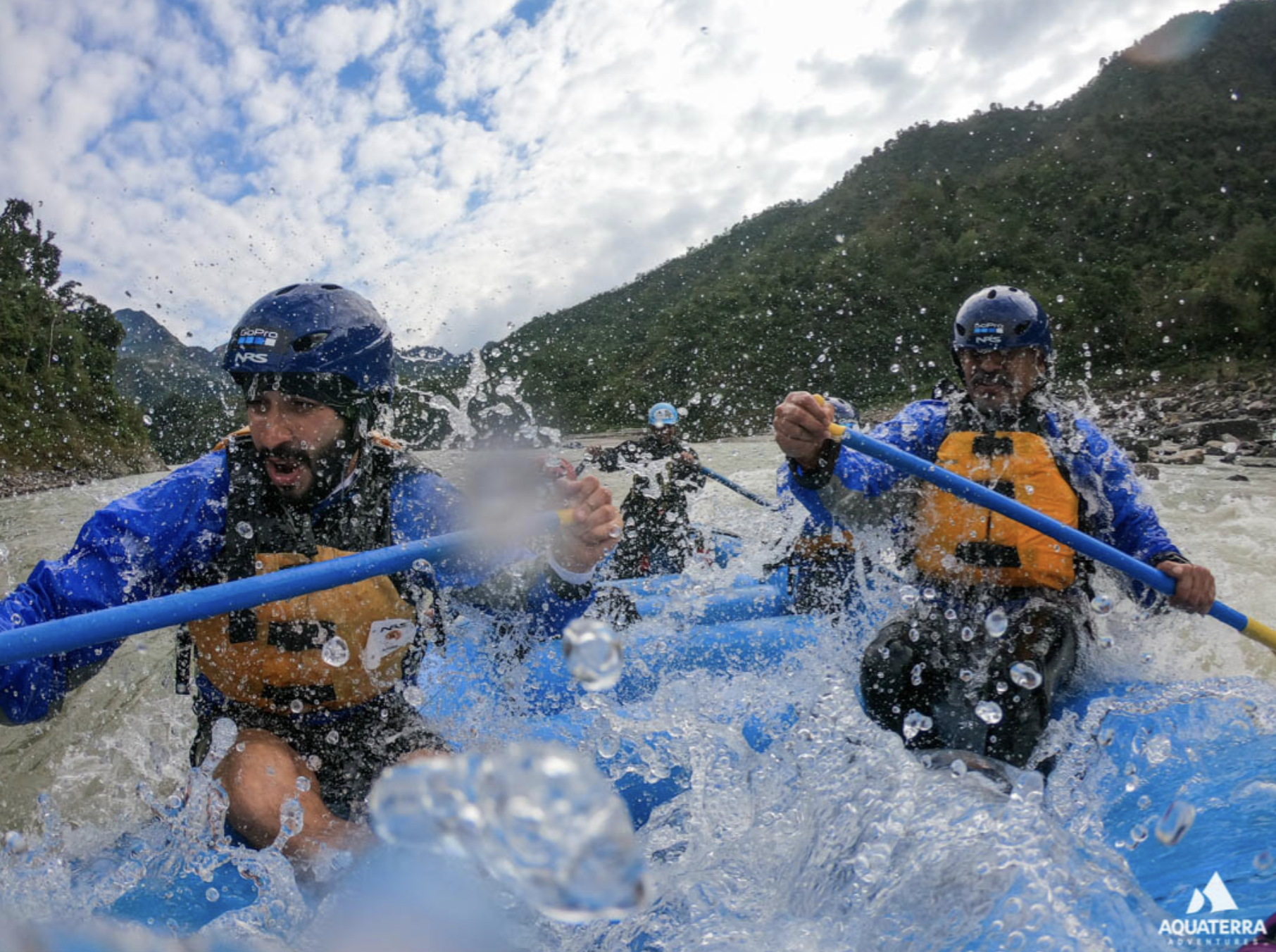
The Evolution of Mountain Tourism
Still, the outdoor industry was fledgling and the customer base was tiny. As dial-up shell accounts for internet gave way to broadband connections, India’s inexorable infrastructural march had begun. The two lane roads gave way to six-lane highways, octroi and taxation eased as Fiat and Ambassador cars gave market share to Maruti. The floodgates to India’s burgeoning economy started showing every sign of change.
It was an exciting time. Development. Terms like sustainability, responsibility, risk assessment, greenwashing, and even safety had not made their way into tourism conferences. It was also unimaginable to think that we were on the cusp of a revolution in India’s aviation, technology, and digital sectors.
The timing was impeccable, as images of our stunning natural resources streamed on mobile devices collided with rising incomes, corporate success stories, better infrastructure, the aviation revolution, and greater awareness. And, of course, a country getting younger each year.
As the landscape began to change, more people needed more companies to operate, in fragile regions where carrying capacities were non-existent. Without entry safeguards, an unregulated outdoor industry sprang into existence.
India wasn’t alone, but countries more experienced with tourism quickly realized something had to be done. Venice levied an entry fee to combat visitors, Milan banned ice cream and pizza late at night, Amsterdam refused permission for new hotels. In Greece, the Acropolis visitors were required to apply for time slots, and the government also implemented restrictions to decrease crowds along the country’s picturesque shores. These limitations included a cap on the number of bars and restaurants on a newly established list of 198 protected beaches.
Overtourism has arrived to India’s mountain valleys and our beaches, forests, protected regions.
The trails have changed, with conveyor belt operations leading groups to illegal fixed trekking camps inside our protected forests and sanctuaries. Latrine pits are dug on Kashmir’s meadows as overloaded horses carry excessive loads to support an ongoing price war to cater to the rapidly expanding outdoor adventure market. Poop-filled plastic bags were thrown into the frozen Zanskar, as companies rushed to invent ridiculous “green” campaigns to offset the damage they feel no remorse for.
A shrinking old guard stood witness to rising accidents, safety violations, casualties, missing clients, drownings and environmental degradation. It became the precursor to bugyal bans and restrictions.
The arena was land, water and air. From clients dying on innocuous Class 3 river stretches to harnesses opening midair whilst paragliding and inexplicable trekking deaths due to lack of care, experience and prevention. By 2020—the most recent year recorded—India’s ranking in the global Adventure Tourism Development Index (ATDI) had slipped to 96.
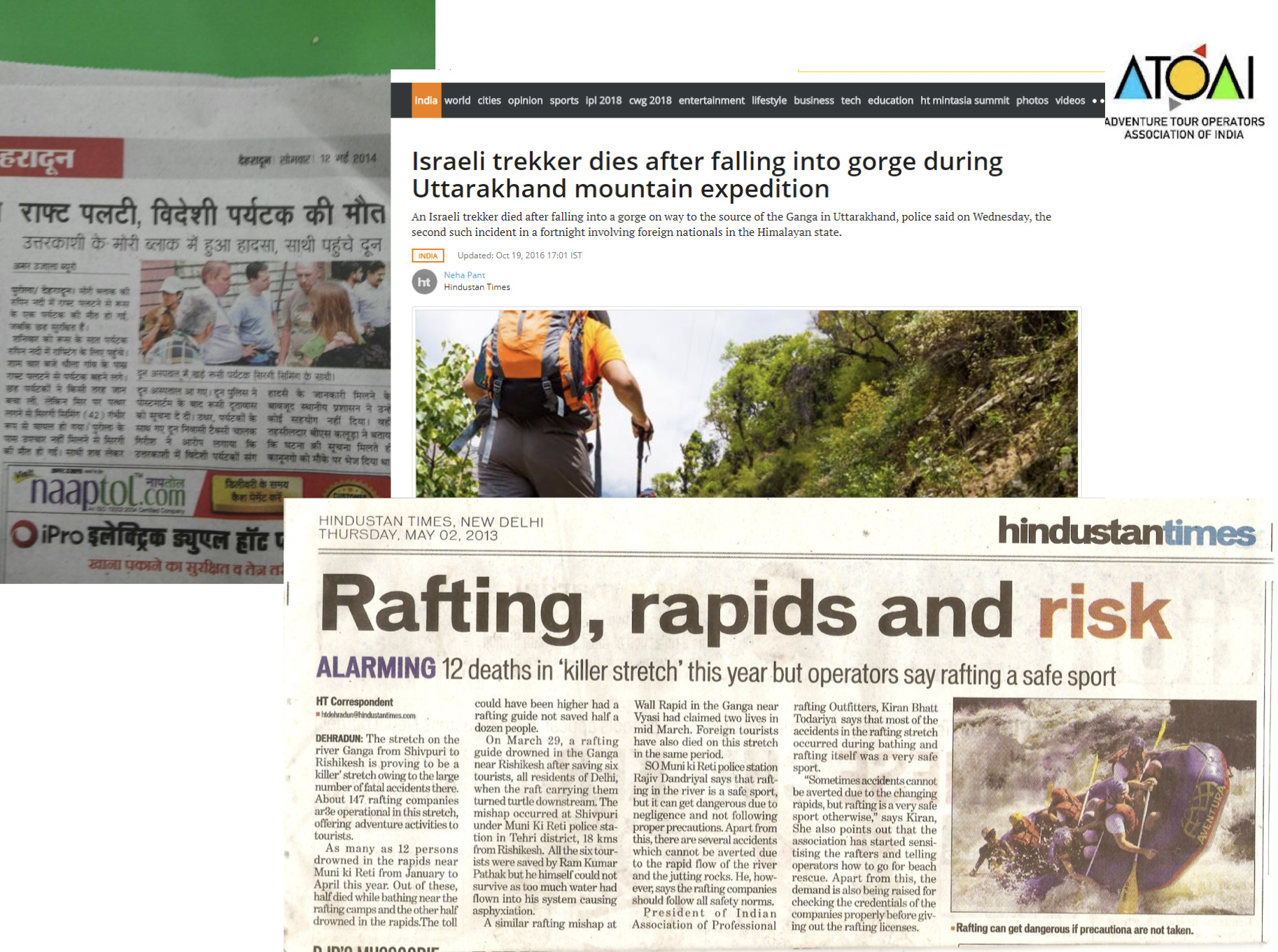
The industry is in agreement that if Indian outdoor adventure tourism is to survive, then we need to control overtourism.
“It is now so apparent that not only do we have to consciously design our adventure travel offerings with the the knowledge and foresight created by sustainable-responsible code, but also be at the forefront of the debate, disseminating and actively assisting policy planners to incorporate the learnings for the larger social good”
–Rajesh Ojha, Banjara Camps
“I’ve seen successful tourism models around the world, some of them with diktats as simple as “no promotion zones,” or diluting the footfall in concentrated pockets. I fail to understand why small measures with deep impacts cannot be implemented in our own country, especially in an ecosystem as fragile as the Himalaya, where we are seeing climate change and the ill effects of over tourism relentlessly, year after year.”
-Shikha Tripathi, Snowfox Escapes
“To make sure the desired vision becomes a reality; it is crucial for the government and all industry stakeholders to continue collaborating. This partnership is necessary to establish adventure tourism as a key driver for economic growth and development in India”
-Vinayak Koul, SnowLion Expeditions
Apoorva Prasad, the founder of this publication—India’s first outdoor magazine–feels similarly.
Indians are not the only people in the world to have become infatuated with adventure before being truly ready. When I started The Outdoor Journal, the first phrase in our company purpose was ‘to educate.’ It had become very clear, even in 2013, that the overwhelming mass of India’s new adventure travelers had little to no experience in the mountains or wilderness areas, but also little willingness to earn it the hard way, like the old guard did. We now live in a world of instant gratification and the fastest shortcuts to things we want. Unfortunately, in the mountains, quick shortcuts can easily lead to death. It is critical to learn first, slowly and diligently, before heading into experiences that can have serious ramifications. As a country, India has the history, knowledge and resources. Why aren’t we better utilizing them as a people and culture?”
-Apoorva Prasad, The Outdoor Journal
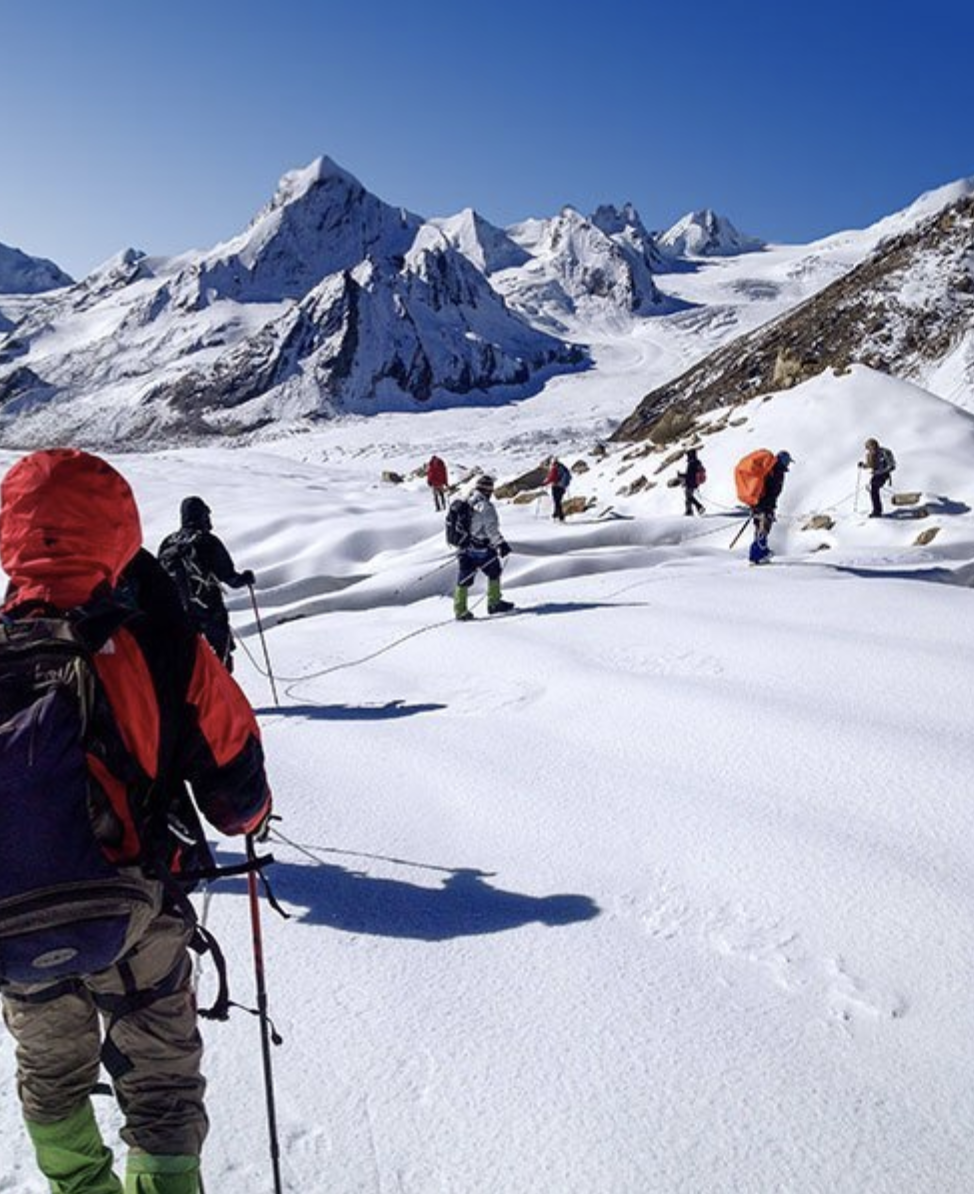
The industry and government should soon realize that the destination and guarding its unique selling proposition (USP) must always be held sacred. There is no room for opportunist companies, outfitters or guides to wreck what has taken a generation to build, with benchmarks and standards. The customer can never be No. 1.
From what we are seeing through over three decades of leading outdoor trips in India and overseas, there is no way to save our natural heritage other than enforcing standards of gear, guides and guidelines.
The government and industry must act together if adventure tourism is to thrive. In Europe, we see false claims are now punishable by law. And our government can act effectively in certain industries, such as that of fast-moving consumer goods (FMCG). A perfect example is the Patanjali case. Greenwashing is now spoken about and being addressed. India’s Consumer Protection Act, 2019 prohibits false and misleading advertisements or claims.
A system of identification of wrong claims, setting of sustainable and responsible standards should be established to promote tourism in the country’s fragile areas. The government, the operators and the customer need to operate in unison for the system to work.
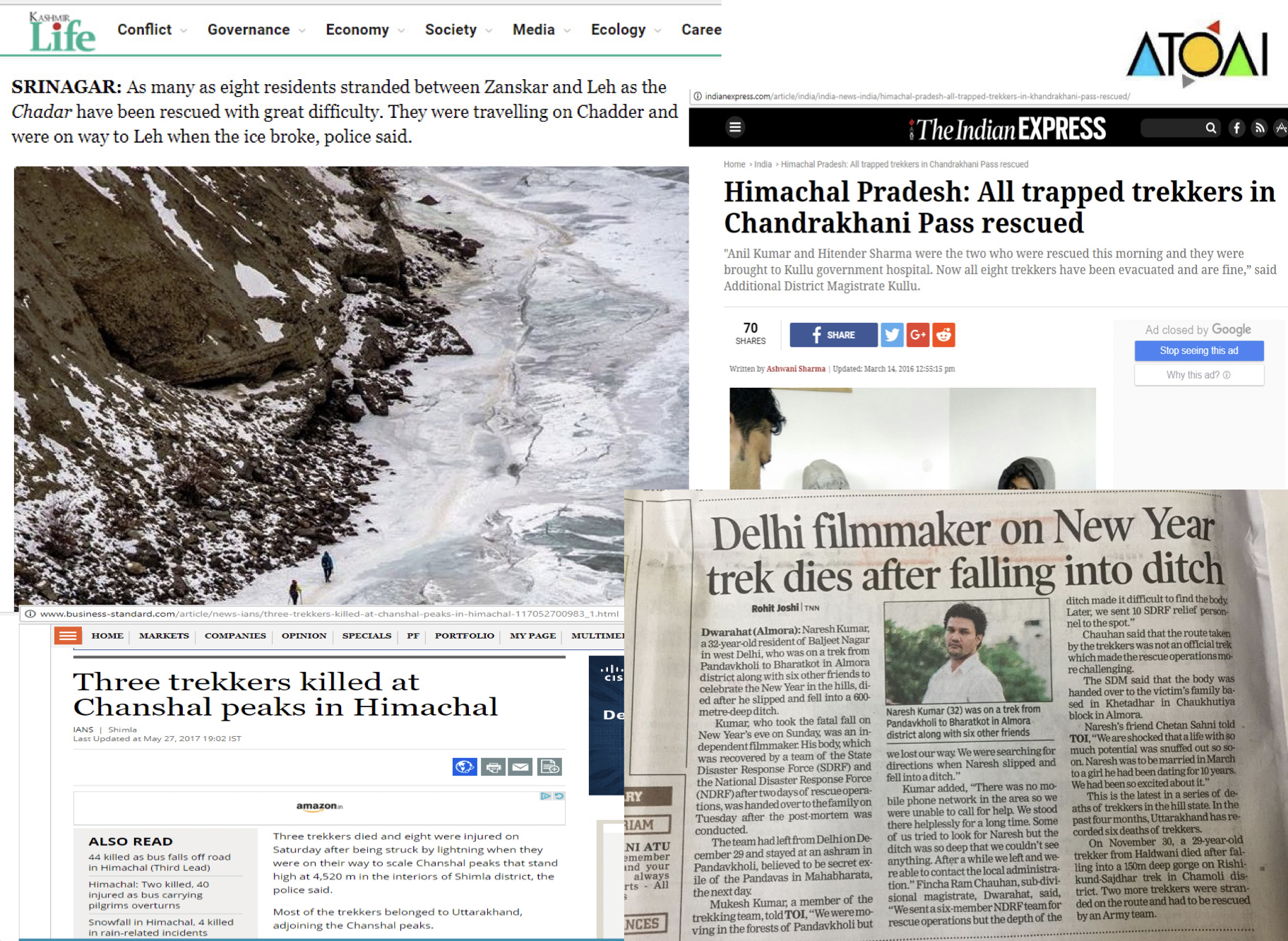
What it could mean for us…
The Adventure Travel Trade Association defines adventure travel as an activity that is small and personalized, involving any two of the three elements including physical activity, cultural exchange, and engagement with nature.
The engagement with nature must come within norms of carrying capacity, waste generation, use of carbon fuel, and leave no trace. It cannot be left to a free-for-all between operators, consumers and stakeholders. There is no room for destroying the very USP that brings the operator and consumer to the destination.
As an industry we have come together to ensure the ethos of small, personalized travel does not change. Guide-to-guest ratio should be benchmarked with the world average to avoid any untoward incidents.
We need to control the growth of inexperienced unregistered companies and guides with an appropriate governing system that keeps a check and controls responsible growth. Incident reporting and industry learning and sharing should be mandatory to ensure no accidents repeat themselves.
“It’s sad that many of us as pioneering adventurer travel outfitters since the late 70’s have to carry the cross of what we thought would be giving a shoulder to a strong growth of this exciting lifestyle and industry. Instead we have a mini Frankenstein growing. The one thing we will need to collectively do is to not feed this monster on the glass plate with ingredients that make him grow—like the bowls of inexperience, lack of safety measures, crazy low prices, eco-destruction and lack of values. Naturally that’s what the industry can do. The government must ensure that the glass plate is taken away. It should be replaced by a resilient steel thali.”
-Mandip Singh Soin, Ibex Expeditions
“The sticker price is not necessarily the ‘cost’ of your holiday. If something seems much cheaper, you can be sure the reduction in price is not coming from the operator’s margins. So is the discount you are getting, a discount on the value of your life?”
-Pradeep Murthy of MuddyBoots
There are steps we can take to re-enact and reimagine progress—as operators, government, and tourists. As an industry we have already developed a National Strategy for Adventure Tourism which led to the formation of a National Board for Adventure Tourism.
The aim is to herald a model law to put an end to subjective opinions, with best-in-class standards to boot. Registration of operators and guides, rescue centers, model law with penalty safeguards, stringent standards, access management is the only way to arrest the present situation. We also need to get better forecasting and warnings for impending weather changes, and allow satellite phones to be used without restriction.
We need to eliminate neglect, and bring care, expertise, leadership and experience back into adventure travel. It is not only the experience of providers but ability to offer an experience to the consumer, to prevent commodification of these experiences. We must take a long, hard look at back-to-back “batches” of 30-40 marching into fragile environs to keep sticker price competitive.
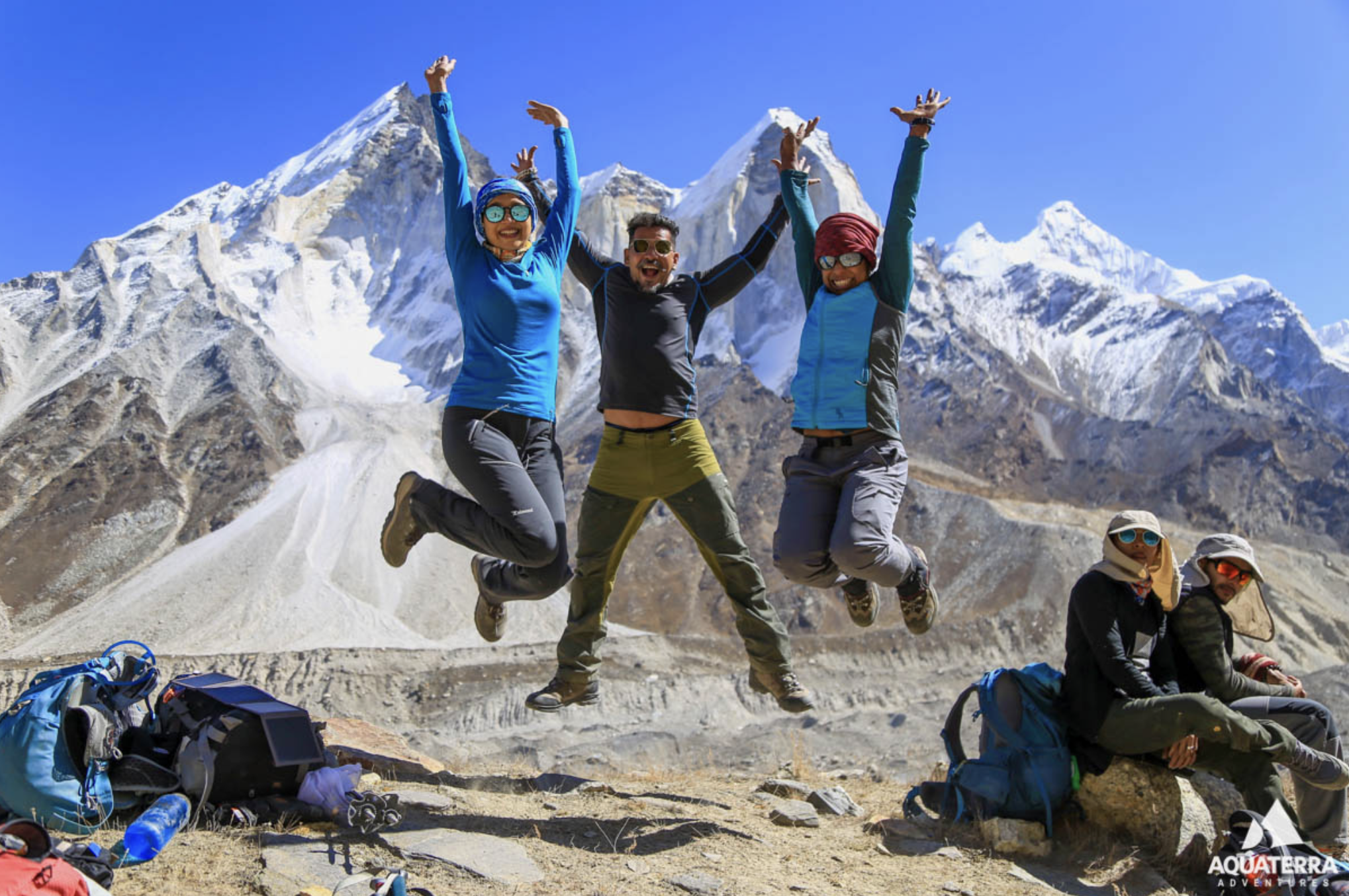
What can the consumer do?
Get smart, for starters. Ask questions. Speak to the outfit. You pay for leadership and experience, not 2-season tents that get buried under Lamkhaga snow, and daal-bhaat. See past the greenwashing, false claims, lies and outright deception in the fine print. What can the governments do? Indian States will need to begin looking into their crystal ball, and devise mechanisms to balance local employment with preservation of the destination.
What can you and I do?
In this digital age, where information is the least of the challenges, I can post more, write more, name and shame those that don’t follow industry protocol, call our bad practices and work with the tourism association to catalyze change.
Where does this leave us, you may wonder? In a precarious situation where things may get worse before they get better. We hope that the gap between the two remains as short as possible. And I hope it happens before I hang up my walking boots.
As an industry veterans and responsible operators, there are guardrails we can to follow…
1. It All Begins on a Desk Somewhere
An adventure trip must always be curated with terrain and domain knowledge ; and planning is a critical part of this exercise. In the Sahastra Tal accident, we learned that Day 6 on the group’s plan seemed to be too ambitious, and attempted without prior experience on this trail, or without a qualified and experienced lead. This day should never have been on the cards.
2. Watch the Weather
The weather in the mountains is known to change, and the only way to prepare is to have layers that will protect you from the wet and the cold. Nature always gives you a warning. Your packing list must encompass these possible weather changes. A base layer, a long sleeve layer, a fleece, down jacket and outer shell (not a flappy poncho) is the only way to trek. Backpack essentials are fleece and outerwear water/windproof shell, energy bars, lunch, and minimum three liters of hydration including a liter of electrolytes.
Again learning from the recent incident, we all know that in June, with the heat rising from the plains, thermal equilibrium, and the pre-monsoon churn, often changes in the afternoon. This seems to not have been accounted for and the group could have moved from Lam Tal to Pari Tal that day, which is a much nicer campsite as well. It is a well protected campsite and provides a great base to walk to Narsingh Tal and the higher Darshan Tal and Sahastra Tal. Unfortunately, planners overlooked both critical factors. Cutting time and costs is fine on a road trip to Timbuktu, certainly not when you are in the mountains in June.
It is yet unknown if the trekkers were wearing base layers since they left early, or if they had the requisite layers on them. If they did, there seems to be little reason for deaths to occur due to dehydration, cold, and hunger. Such issues are never dumped upon trekkers by nature, these are often the result of poor preparation and planning.
3.There is No Democracy in the Mountains
Command and control is key to any adventure travel expedition, keeping the band together on a timeline even more so. In this incident, it is unclear if there was a professional trip leader in charge who would have normally turned the group back by 11 am, or changed the plan to rework a day in and squeeze one out of the descent. This seems to have been one of the main factors leading to the mishap.
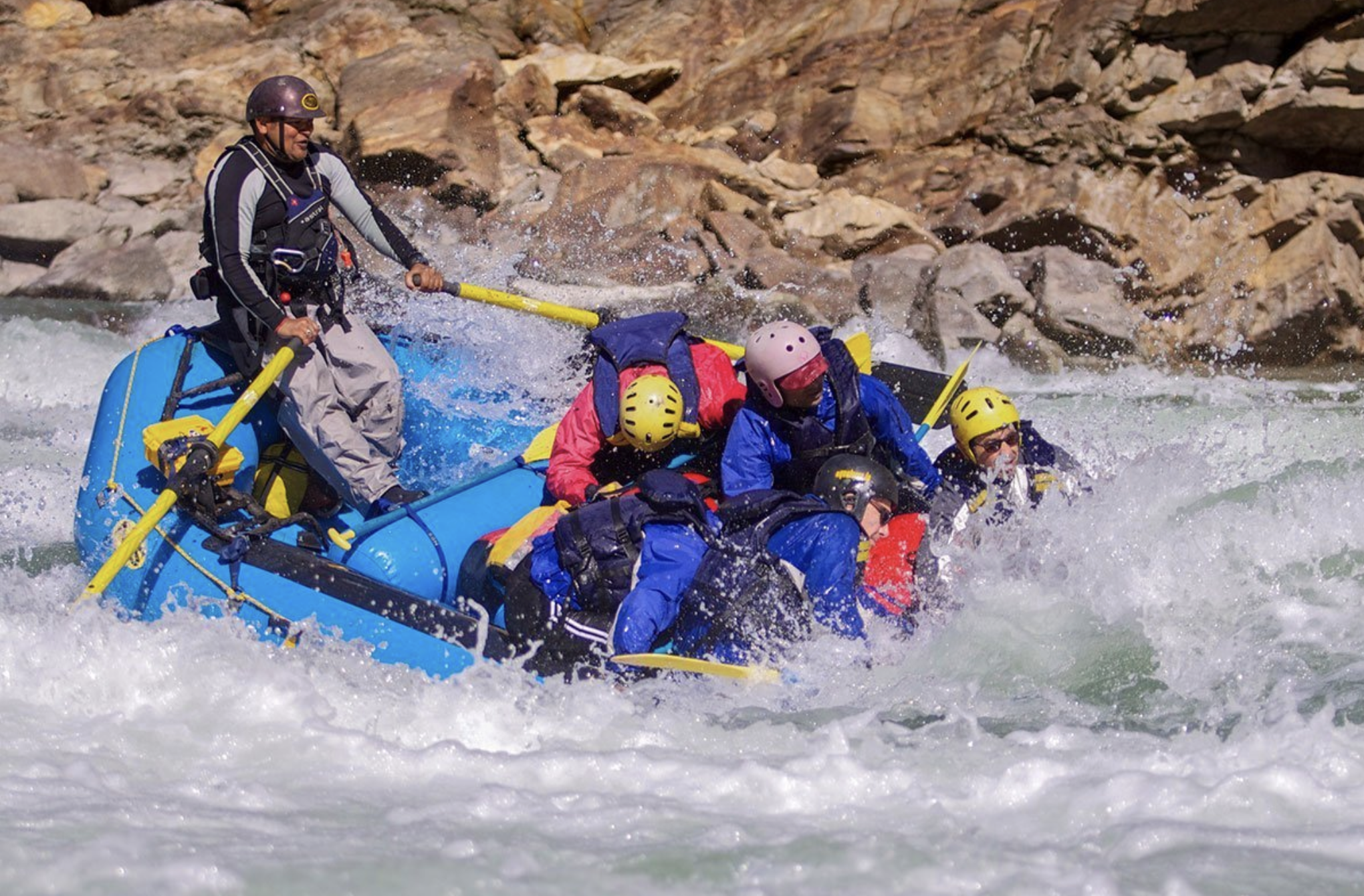
4. Communication
Was there enough communication with the group prior to departure? Were packing lists, itinerary and challenges discussed and were trekkers told what is to be packed and carried each day? Electrolytes, food, energy bars, layers for weather, and so on.
Media reports carry reams of claims of how these were experienced trekkers, but knowing this trail well (and the outcome) shows that although these trekkers may have done many hikes, planning, timing and leadership were certainly diluted. If the group left at 5:30 am, presumably they had ample layers, hydration and nutrition planned for the day.
5. Boost Awareness
The world over, accident reports prevent future accidents, increase customer awareness and help in great learning. No accident report that details the circumstances under which nine precious lives were lost has been shared.
This is the need of the hour, and before freedom of information requests (FIR) and magisterial inquiries are filed, full disclosure by both operator and planners are absolutely non-negotiable.
6. Be Prepared
There’s a wonderful Norwegian saying: Det finnes ikke dårlig vær, bare dårlig klær! which translates to, “There is no bad weather, only bad clothes!”
The media (or anyone else) should not excuse people or write things off because “it was such a bad storm.” Proper preparation may have mitigated these deaths. People have lived in sub zero conditions across the planet with knowledge, planning and preparation for thousands of years.
Vaibhav Kala has been guiding adventure trips, including mountain and river adventures for 32 years. He has trekked and climbed extensively in the Himalaya and beyond, run rivers around the world and led thousands of guests over challenging expeditions.
